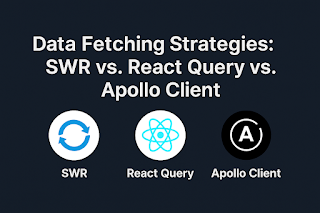Web3 & Blockchain: How They Impact Front-End Development
Web3 and blockchain technologies are reshaping how we build and interact with web applications. While much of the attention goes to backend protocols and decentralized finance (DeFi), front-end developers are increasingly being brought into the spotlight to bridge traditional UX expectations with decentralized logic.
What is Web3?
Web3 refers to the next evolution of the internet—decentralized, user-controlled, and built on blockchain. Unlike Web2, where centralized servers own your data, Web3 allows users to own, control, and monetize their data using decentralized applications (dApps).
Blockchain: The Foundation
Blockchains are distributed ledgers that power cryptocurrencies like Ethereum and Bitcoin. However, for front-end developers, their primary relevance lies in interacting with:
Smart Contracts (on Ethereum, Polygon, etc.)
Wallets (like MetaMask, WalletConnect)
dApps (decentralized applications)
How Blockchain Impacts Front-End Development
New UI/UX Challenges
Smart Contract Integration
User Authentication
State Management Complexity
Decentralized Storage
Code Snippet: Connecting a Wallet using ethers.js
import { ethers } from "ethers";
async function connectWallet() {
if (window.ethereum) {
const provider = new ethers.BrowserProvider(window.ethereum);
const signer = await provider.getSigner();
const address = await signer.getAddress();
console.log("Connected wallet address:", address);
} else {
alert("Please install MetaMask");
}
}Popular Front-End Tools in Web3
wagmi + viem: React hooks for Ethereum
RainbowKit: Wallet connector UI components
Alchemy & Infura: For accessing blockchain nodes
The Graph: For querying blockchain data efficiently
Use Cases
NFT Marketplaces (e.g., OpenSea, Magic Eden)
Decentralized Finance UIs (Uniswap, Aave)
Gaming dApps
DAO Interfaces
Best Practices
Always inform users before signing transactions
Use spinners and confirmations to handle slow transactions
Store only necessary information on-chain
Leverage subgraphs and indexers for performance
Final Thoughts
Web3 brings a paradigm shift in how front-end developers think about user experience, authentication, and data flow. As the space matures, developers who understand these tools and concepts will play a pivotal role in making decentralized tech accessible to everyday users.
#Web3Development #BlockchainForFrontend #dApps #SmartContracts #ReactJS #MetaMask #Ethereum #FrontEndTrends #WebDevelopment #CryptoUX #DecentralizedApps #IPFS #Web3UX




Comments
Post a Comment